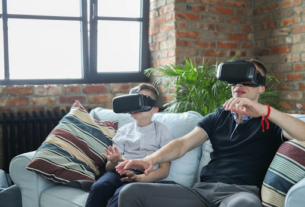Healthcare is an ever-evolving field, and we are now seeing the rise of a new technology that is set to revolutionize it even further: The Internet Of Medical Things (IoMT). This technology connects medical devices to the internet, allowing for real-time data exchange and automated treatment. The IoMT has already begun its transformation of healthcare as we know it, and this blog post will discuss how this tremendous advancement has been impacting the industry. We will explore its potential applications, the challenges that come along with it, and the exciting possibilities that lie ahead.
What is the Internet of Medical Things?
The internet of medical things, often shortened to IoMT, is a term used to describe the growing network of interconnected devices and sensors that are being used to collect and transmit health data. This data can be used by patients, doctors, and other healthcare professionals to improve the quality and efficiency of healthcare delivery.
IoMT devices include everything from wearable fitness trackers to implantable sensors and smart pill bottles. These devices are able to collect a variety of health data, including heart rate, blood pressure, activity levels, sleep patterns, and more. This data can be transmitted wirelessly to a central database or directly to a healthcare provider, where it can be used to improve patient care.
One of the most promising applications of IoMT is in the area of chronic disease management. By continuously monitoring patients’ health data, IoMT devices can provide early warning signs of potential problems and allow for prompt intervention. For example, a wearable sensor that monitors heart rate and blood pressure could be used to detect early signs of hypertension and help prevent more serious complications down the road.
IoMT is also being used to improve the efficiency of clinical trials. By collecting real-time data from large numbers of patients across multiple geographies, IoMT devices can help researchers identify trends and patterns that would otherwise be missed. This information can then be used to more quickly identify which treatments are most effective and bring new therapies to market faster.
The Different Types of Devices
The Internet of Medical Things (IoMT) is a term used to describe the network of physical devices, objects, and sensors that are connected to the internet and share data. These devices can be anything from fitness trackers and heart monitors to pacemakers and blood pressure cuffs.
The IoMT has the potential to revolutionize healthcare by providing real-time data that can be used to improve patient care. For example, if a patient with diabetes is wearing a glucose monitor, their doctor can see in real-time how their blood sugar is doing and make changes to their treatment plan accordingly.
There are endless possibilities for how the IoMT can be used to improve healthcare, but there are some privacy concerns that need to be addressed before it can truly take off.
It’s important to note that before deploying any IoMT devices, especially those that collect sensitive health data, it’s crucial to ensure compliance with OIG exclusion rules. The OIG maintains a list of individuals and entities barred from participating in federal healthcare programs. Using non-compliant IoMT devices or service providers could jeopardize patient privacy, lead to insurance claim denials, and potentially result in penalties.
Pros and Cons of the IoMT
The Internet of Medical Things, also known as IoMT, is a term used to describe the use of internet-connected devices and sensors in the healthcare industry. This technology has the potential to transform healthcare by providing real-time data and insights that can improve patient care and outcomes. However, there are also some potential risks associated with IoMT, such as data security and privacy concerns.
One of the main benefits of IoMT is that it can help to improve patient care by providing real-time data and insights. For example, wearable devices such as fitness trackers can be used to monitor patients’ vital signs and activity levels, which can help doctors to identify early signs of illness or disease. In addition, IoMT can also be used to track patients’ medication adherence, which is an important factor in ensuring that treatments are effective.
However, there are also some potential risks associated with IoMT. One of the main concerns is around data security and privacy, as sensitive patient information will be stored on internet-connected devices. There is also a risk that hackers could gain access to this data and misuse it. Another concern is that the use of IoMT could lead to a rise in ‘telemedicine’ appointments, where patients consult with their doctor via video call instead of in person. This could have a negative impact on the quality of care that patients receive.
How te IoMT is Transforming Healthcare
The Internet of Medical Things is transforming healthcare by providing real-time access to patient data, enabling remote patient monitoring, and improving clinical decision making.
The IoMT is a network of devices and sensors that collect and transmit patient data. This data can be used to provide real-time feedback to clinicians, allowing for more accurate diagnosis and treatment. The IoMT is also being used to develop new models of care, such as remote patient monitoring, which can improve access to care for patients in underserved communities.
The benefits of the IoMT are already being felt by patients and providers alike. Patients are experiencing improved health outcomes thanks to the ability to receive timely care and treatment. And providers are benefitting from increased efficiencies and better decision making.
Conclusion
The Internet of Medical Things is transforming the healthcare industry in incredible ways. It’s making it easier to connect with doctors, keep track of medical records, and seo agency manchester access more personalized care. This technology is revolutionizing how we approach healthcare and will make accessing quality care much more accessible than ever before. The IoT is a game-changer that will continue to bring great advancements to the field of health and medicine in the years ahead.




